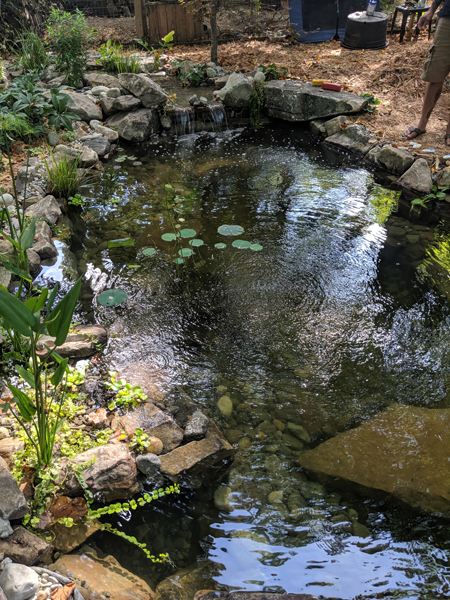
In our line of work, customer satisfaction and the ability to create a good build are paramount if you want to stay in business long term. More important, though, is the understanding that we can always learn, grow, and become better tomorrow than we were today.

While 2019 was a transformative year for our company, we are excited to tackle 2020 with new knowledge that will help us create the kind of tranquil, inspiring landscapes that we are proud to showcase out in the community. One of the biggest takeaways we discovered this past year came when some routine troubleshooting led to an unexpected backyard transformation.
Earlier in the year, our team began working on an 11-by-16-foot koi pond that was 4 feet deep with a bog wetland filter, 10-foot stream and an intake bay. We were especially excited to build for the homeowners and see the plans come to fruition.

One of our favorite things to see in a build is beautiful aquatic plant life that adds to the overall ambiance of the project. However, due to the large koi in the pond, we did not have an abundance of aquatic plantings in the main pond itself. Instead, we put aquatic plantings in the upper shelf of the pond, along the stream and bog, and inside the intake bay.
As with any ecosystem pond like this one, bog and wetland filters work better over time. Even with the large amount of filtration in the pond, we started noticing issues with tannins in the water fairly early after construction. We tried all the normal go-to tactics like barley, activated charcoal, rapid clear pads, flocculant and complete water changes to fix the problem, but we found no permanent resolution. Scratching our heads, we understood that we had to find a resolution to this complicated issue.

After researching the surrounding area, surveying the entire space and running some testing on our end, we noticed that the issue seemed to stem from the lack of sunlight in the homeowner’s yard. The nearby trees appeared to be negatively impacting the health of their new pond. After consulting with the clients, we concluded that the lack of natural light was the culprit that prevented the aquatic plantings from thriving.
The homeowners opted to have a few of their larger trees removed from the property, which not only helped to reduce the number of leaves and acorns that were dropping into the water, but also helped clean up the pond almost immediately. The tree removal also led to a beautiful backyard transformation that the customers can appreciate for years to come.
This project’s difficulties helped our team to gain a better understanding of how sunlight and healthy aquatic life go hand in hand. We’re proud to have been able to troubleshoot and fix the problem. What we’re even more proud of, though, is the end result for the clients. Their space is light and beautiful, providing the ideal backdrop for a tranquil moment reflecting outdoors.







